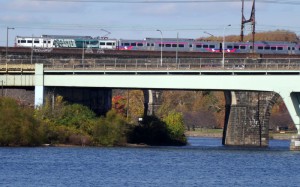
Recently, the Southeastern Pennsylvania Transportation Authority (SEPTA) announced that it would be forced to dramatically cut service and raise fares because of a $213 million deficit in next year’s budget (which begins on July 1, 2025). Proposed changes include the elimination of fifty bus routes, five regional rail lines and one metro line, a 20 percent reduction in service and the elimination of all services after 9PM on the surviving regional rail and metro lines, and a 20 percent reduction in service on surviving bus lines. This announcement had the effect that SEPTA likely sought: outrage and shock over the proposed cutbacks and demands that the state find the needed funds.
As a scholar who studies the history of public transportation, I was neither shocked nor surprised by the deficit or the proposed service cuts and fare increases. SEPTA has been inadequately funded through most of its history and this issue has only become worse in the twenty-first century. My entry on the history of SEPTA for The Encyclopedia of Greater Philadelphia concluded that “From its founding, SEPTA [has] struggled with structural, funding, and management issues [and t]hese issues, along with the growth of reverse commuting and labor strife, continued to challenge SEPTA and its riders in the early twenty-first century.” From the 1980s onward, Pennsylvania has focused on largely short-term solutions to these issues.
The current funding crisis dates to the summer of 2024. At that time SEPTA warned of dramatic service cuts and fare increases, prompting Governor Josh Shapiro to propose an increase in funding for the transit authority. After the Pennsylvania legislature refused to pass the requested increase, Shapiro, in what he termed a “stopgap measure,” transferred $153 million in state highway funds to SEPTA. Nothing has changed over the last year and, due to federal funding cuts, Shapiro likely no longer has a magic pot of cash from which he can recreate last year’s miracle.
SEPTA’s funding problems are not unique to it or other transit providers in the Commonwealth, as Pennsylvania does not adequately fund any form of transportation. Although the political battle in Harrisburg is often characterized as one between rural Republicans who want highway money and urban Democrats who want transit funding, the state actually doesn’t fund either of these areas at adequate levels. Poorly funded transportation infrastructure is not just a Pennsylvania problem, however, as unsafe roads and bridges are common throughout the United States. A decade ago, Pennsylvania had the highest percentage of structurally deficient bridges of any state, but Shapiro and the legislature increased highway funding in 2023-2024 and this has allowed the state to make progress in that area. What Pennsylvania needs is a similar consensus on mass transit.
A key part of SEPTA’s problem, however, is the public perception that the general manager and the board are politicians and not transportation experts capable of dealing effectively with the challenges at hand. With recent disasters like the painful implementation of the Key transit card program and the delayed introduction of the “bus revolution” it’s easy to see how people form this impression. It is worth noting, however, that the desire to save money motivated SEPTA to do both of these projects in-house rather that use an existing (and proven) transit payment system and to hire an established consultant to revise the bus routes.
Arguably SEPTA needs leadership that has politically savvy people at the top who can work with City Hall, Harrisburg and Washington on acquiring a stable funding base and a mid-level management who know how to run buses, trolleys and trains. It is worth recalling that one of SEPTA’s greatest crises was its truly disastrous takeover of the direct operation of the regional rail network in 1983 when David Gunn was general manager. Gunn was midway into his over forty- year career when he worked in Philadelphia and was acknowledged as one of North America’s greatest transit experts. A shutdown of the commuter rail system, followed by the longest strike in SEPTA’s history, caused such a massive decline in ridership that it took over twenty years for the system to recover. So, perhaps transportation expertise at the most senior levels can be overrated.
What SEPTA, its riders, and all users of transportation infrastructure really need are politicians in Philadelphia, Harrisburg, and Washington who are less interested in sound bites and press conferences and are more concerned with sustaining a transportation system essential to the regional economy. This is a truly existential crisis for SEPTA, as, if the proposed cuts go through, it is difficult to see any justification for SEPTA’s continued existence. Eliminating effectively half of the suburban rail network (and all service after 9 PM) and most suburban bus lines, will leave greater Philadelphia with less regional, cross-county service than existed even before SEPTA was created. Such a setback to the region’s evolving integration in such sectors as healthcare and research would be deeply damaging in lost revenue not just locally but to the state budget itself.
John Hepp is Professor of History Emeritus at Wilkes University and his focus is urban cultural history in the period 1600 to the present. He is a regular rider of SEPTA’s Cynwyd Line, a six-mile-long regional rail line with a total of seven trips a day.